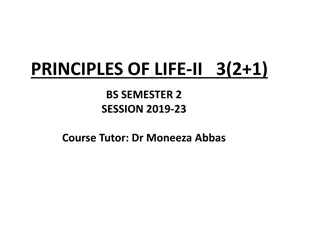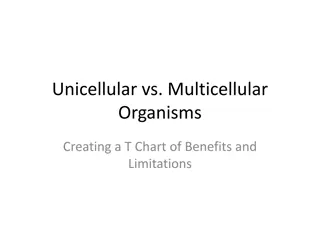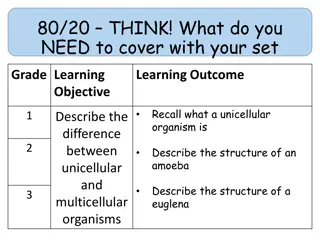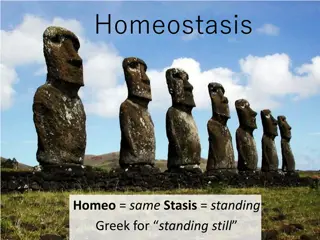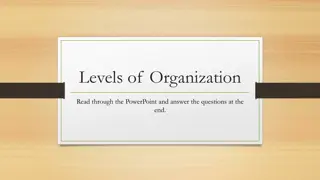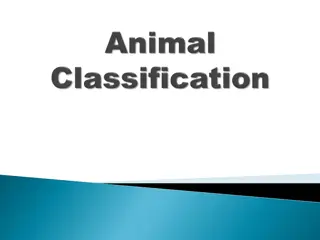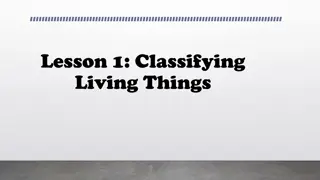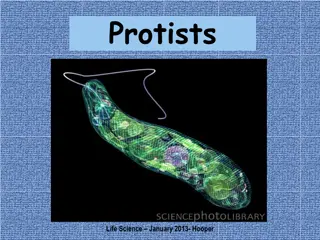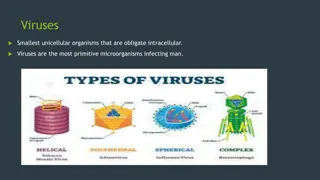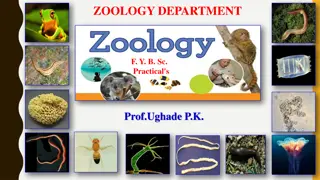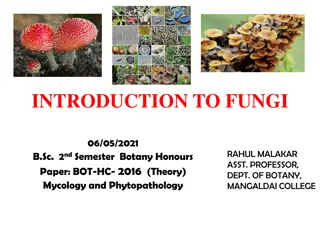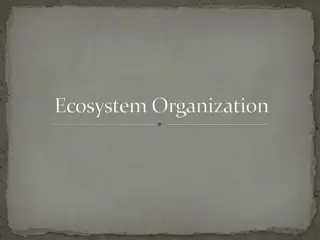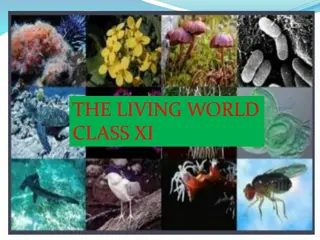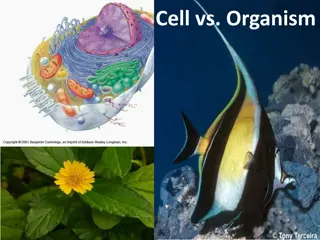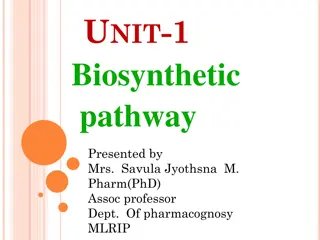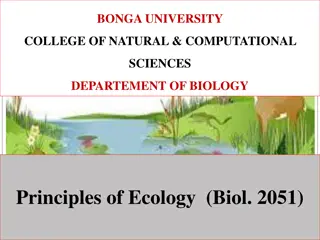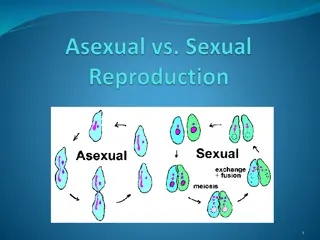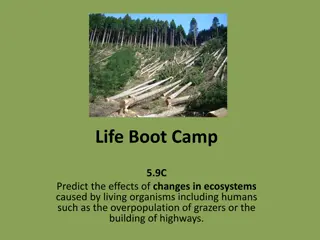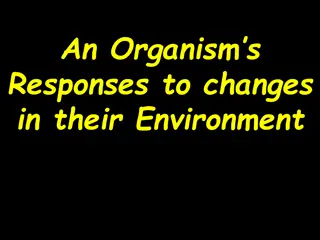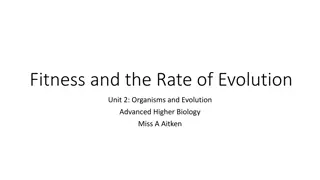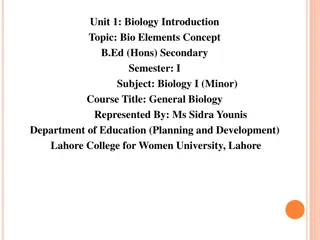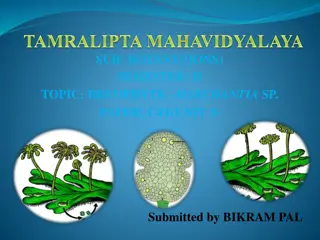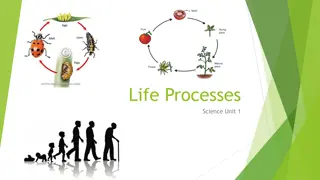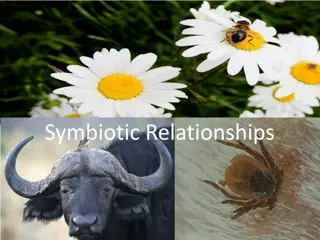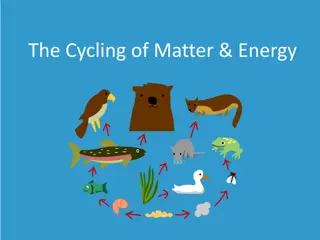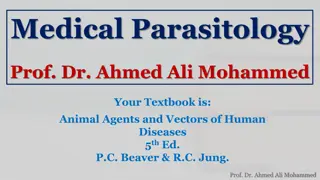Unveiling the World of Unicellular Organisms
Discover the fascinating world of unicellular organisms through examples like Amoeba and Paramecium. Compare the characteristics and functions of unicellular and multicellular organisms, explore their feeding, movement, waste removal, and reproduction processes, and delve into the diversity of cell types in the human body. Uncover the benefits of multicellularity and explore the unique features of single-celled and multi-celled life forms.
Download Presentation

Please find below an Image/Link to download the presentation.
The content on the website is provided AS IS for your information and personal use only. It may not be sold, licensed, or shared on other websites without obtaining consent from the author. Download presentation by click this link. If you encounter any issues during the download, it is possible that the publisher has removed the file from their server.
E N D
Presentation Transcript
Unicellular Organisms Made of only one cell!!
With a partner...brainstorm answers to the following questions 1) How do you think unicellular organisms...eat, move, get rid of wastes, and reproduce? 2) How do multicellular organisms...eat, move, get rid of wastes, reproduce? 3) How many different cell types are found in the human body? Name as many as you can. 4) What would be some of the benefits of being a multicellular organism? 5) Name 2 multicellular organisms and 2 unicellular organisms.
Copy the Following Chart in Your Notes Unicellular Multicellular 1) Made of one cell 1) Made of more than one cell 2) Single cell performs all life functions (eat, reproduce, rid wastes, move) 2) Specialized cells perform different life functions (i.e. Nerve cells) 3) Example amoeba, bacteria 3) Example - humans
Examples of Unicellular Species - Amoeba Feeding Eats tiny plants/bacteria Temporary arms surround food and bring it into the cell vacuole Movement Called cytoplasmic streaming Cytoplasm moves in one direction and rest of cell follows Reproduction One parent divides into two. This is called binary fission. Removal of Wastes Wastes removed from cell by vacuoles
Amoeba Feeds! Feeding: http://www.youtube.com/watch?v=W6rnhiMxtK U&feature=related Movement: http://www.youtube.com/watch?v=7pR7TNzJ_p A
Paramecium Feeding Eats bacteria/smaller organisms Has a structure called a gullet Tiny hairs sweep food into this gullet Movement Swims using tiny hairlike structures called cilia Reproduction Divides into two by binary fission (can divide up to 2-3 times a day!!) Removal of Wastes Vacuoles responsible for removing wastes
Paramecium Feeding Feeding http://www.youtube.com/watch?v=l9ymaSzcsdY& feature=fvw Reproduction http://www.youtube.com/watch?v=K0ZP8VtxUZ0 &feature=related
Euglena Feeding Able to make its own food (like a plant) In the dark, it can eat other species (like amoeba) Movement Uses a whip-like structure called a flagella to move through water Reproduction Splits into two by using binary fission Remove Wastes The vacuole of the cell removes the wastes
Euglena Reproduction - Binary Fission http://www.youtube.com/watch?v=5fg3Q-hbSsI Movement http://www.youtube.com/watch?v=fI7nEWUjk3A
YOUR QUESTIONS - What does unicellular mean? - How big are unicellular organisms? - What things do unicellular organisms contain? - Do people have unicellular organisms? - What do unicellular organisms eat? - How do unicellular organisms move? - Do they mate? - Do unicellular organisms have organelles?
Resource Pond Water Critters Website http://www.microscope- microscope.org/applications/pond- critters/pond-critters.htm


